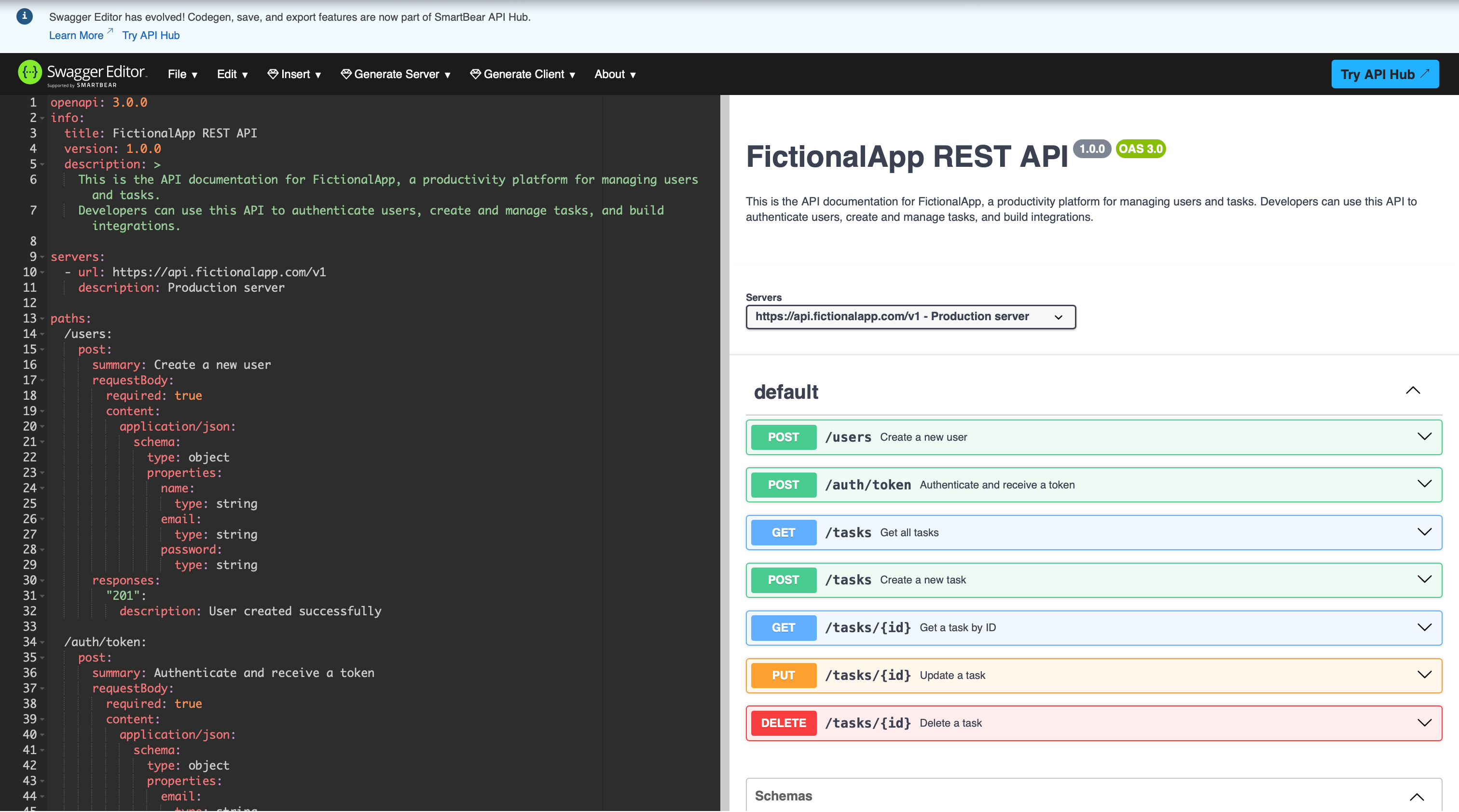Interactive REST API Documentation for a SaaS Productivity App
Context
In this project, I developed an interactive API documentation experience for a fictional SaaS productivity platform called FictionalApp. The purpose of the API is to allow third-party developers or internal teams to programmatically manage users and tasks through a RESTful interface. This API enables scalable automation and integration with other platforms, such as custom dashboards or task pipelines.
The project was designed to simulate a real-world scenario where an API is needed to support external integrations and developer onboarding.
Solution
I created a complete OpenAPI 3.0 specification in YAML format (openapi.yaml) that defines the available endpoints, request/response formats, authentication flow, error handling, and rate limits. This spec was uploaded to Swagger Editor to generate a fully interactive API reference experience, similar to what developers would encounter at companies like Stripe or Twilio.
Alongside the YAML, I authored a Markdown onboarding guide that walks developers through how to authenticate, use endpoints, and interpret responses. This guide was written in plain, clear language to demonstrate my ability to make technical topics accessible.
Impact
This project showcases my ability to:
- Create API documentation from scratch using OpenAPI and Swagger
- Write onboarding documentation that explains technical workflows in a simple, step-by-step manner
- Understand RESTful architecture and HTTP methods (GET, POST, PUT, DELETE)
- Use YAML for configuration and documentation
- Simulate real-world developer onboarding experiences
The finished Swagger UI preview allows viewers to see the API in action and experiment with requests in a sandbox environment.
HTTP Methods Overview
Since clear explanations are essential in technical writing, here’s how I break down the core API operations:
| HTTP Method | Purpose | Example Use |
|---|---|---|
| GET | Retrieve data | Get user profile or task list |
| POST | Create new data | Add new task or user |
| PUT | Update existing data | Edit task details or user info |
| DELETE | Remove data | Delete completed task |
Key Takeaways
- YAML is the preferred format for OpenAPI specs because of its readability.
- REST APIs follow a consistent pattern of CRUD operations that developers rely on to build integrations.
- Swagger UI can turn a static spec into an interactive developer experience.
- Clarity and empathy in documentation are just as important as technical accuracy.
Reflection
Before this project, I had a limited understanding of how REST APIs worked under the hood. Through this process, I not only learned the full lifecycle of an API call but also how to communicate that effectively. This experience significantly boosted my confidence in both technical writing and foundational backend workflows.
Project Links
Right-click a link and choose “Open in new tab” if you don’t want to leave this page.
